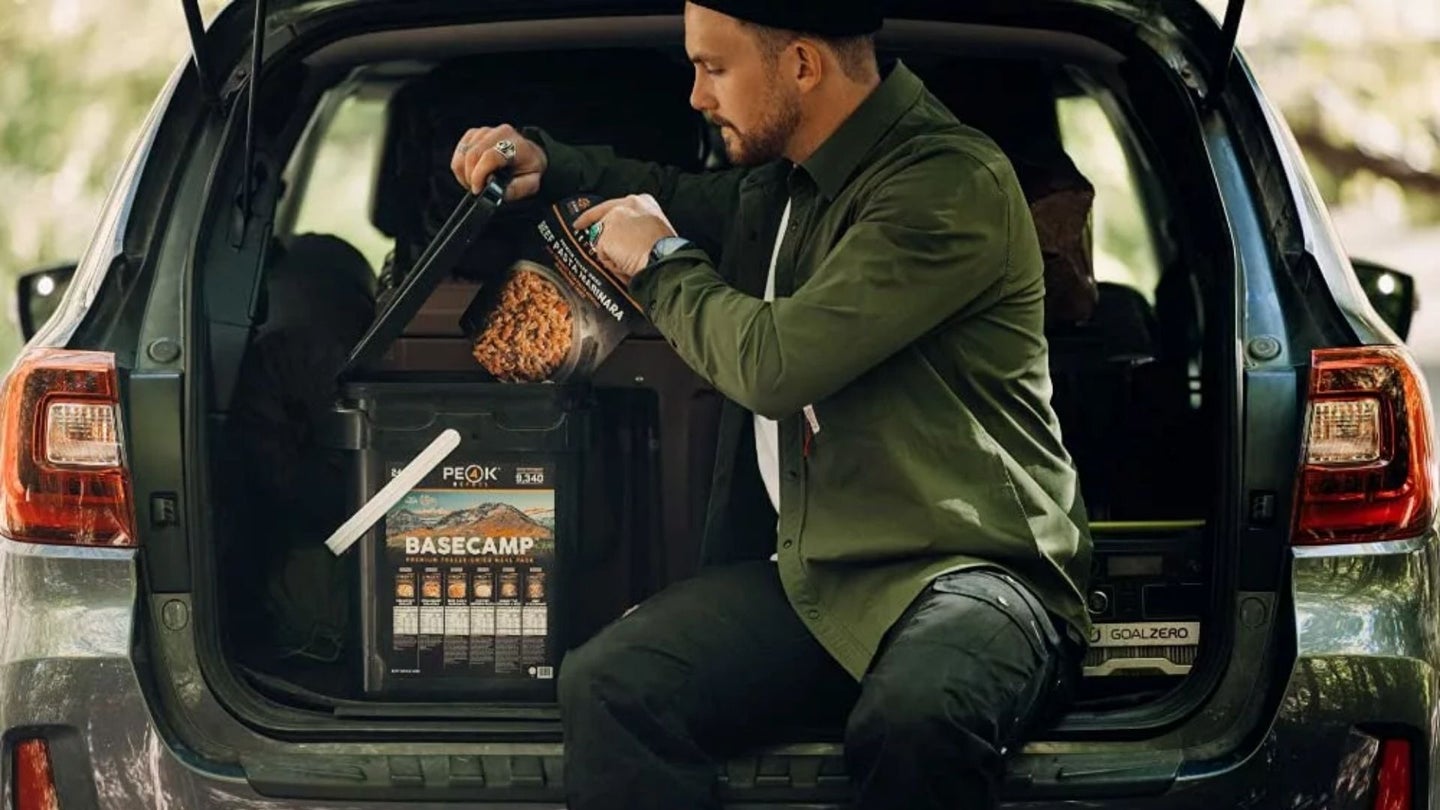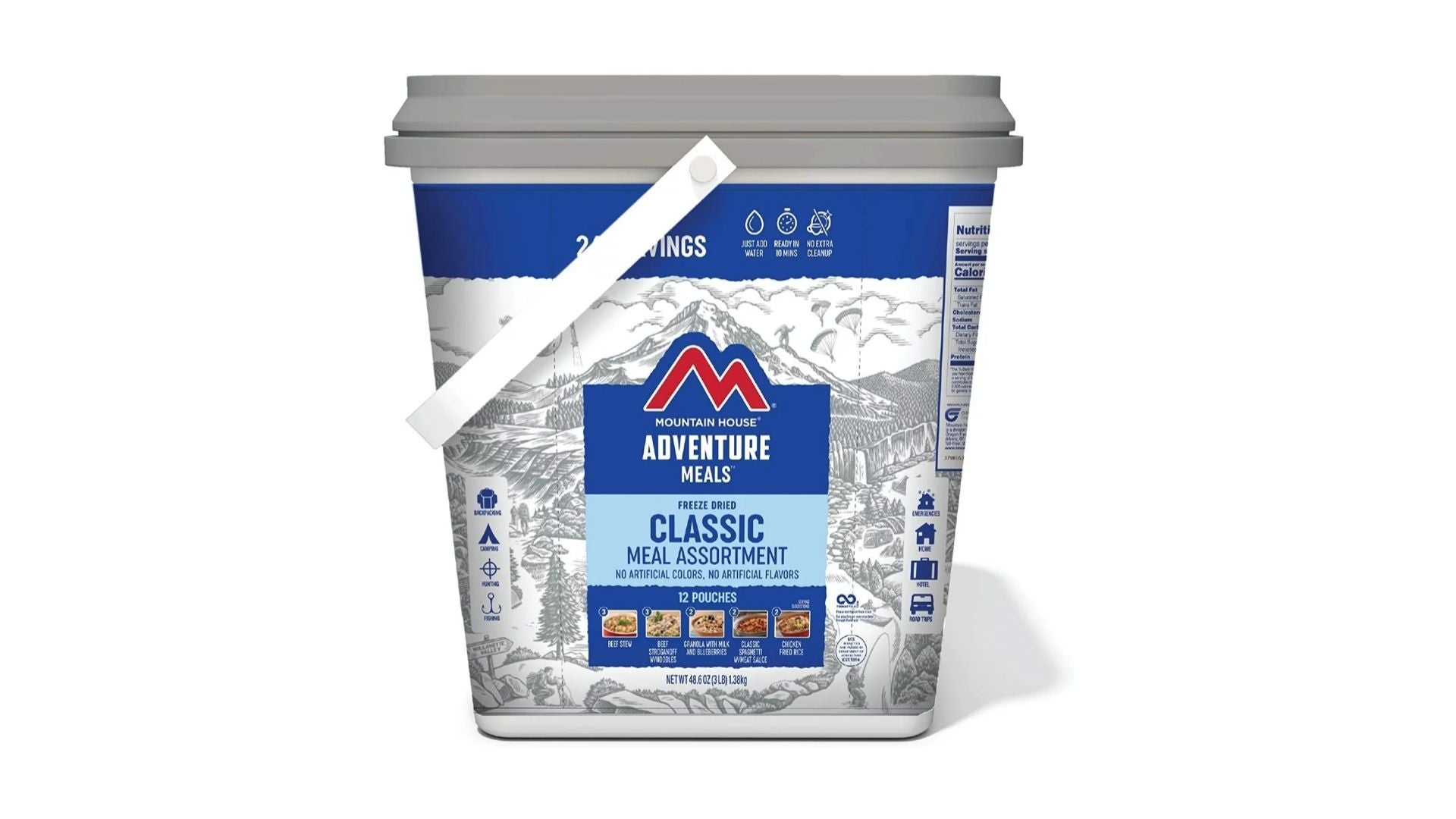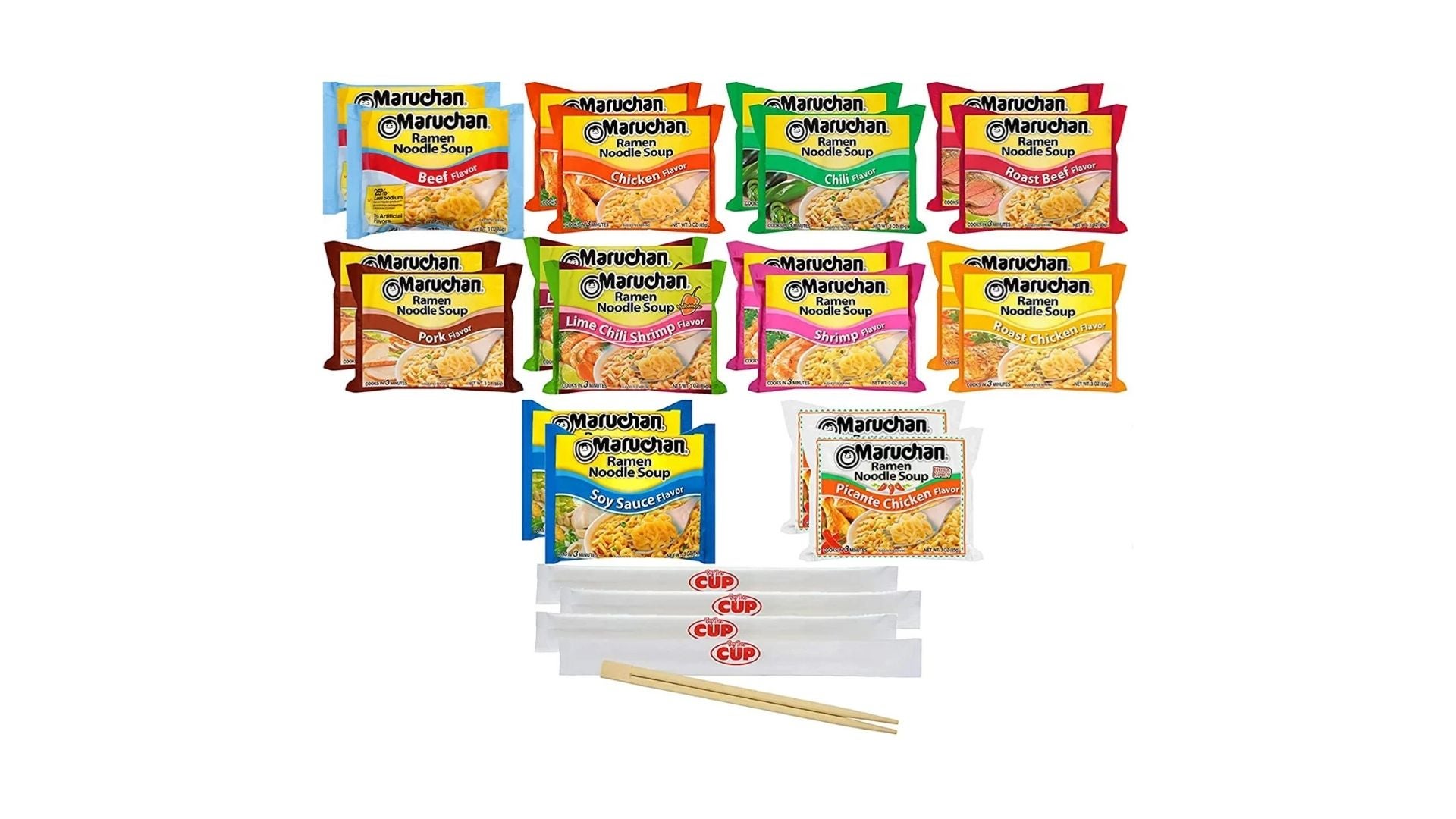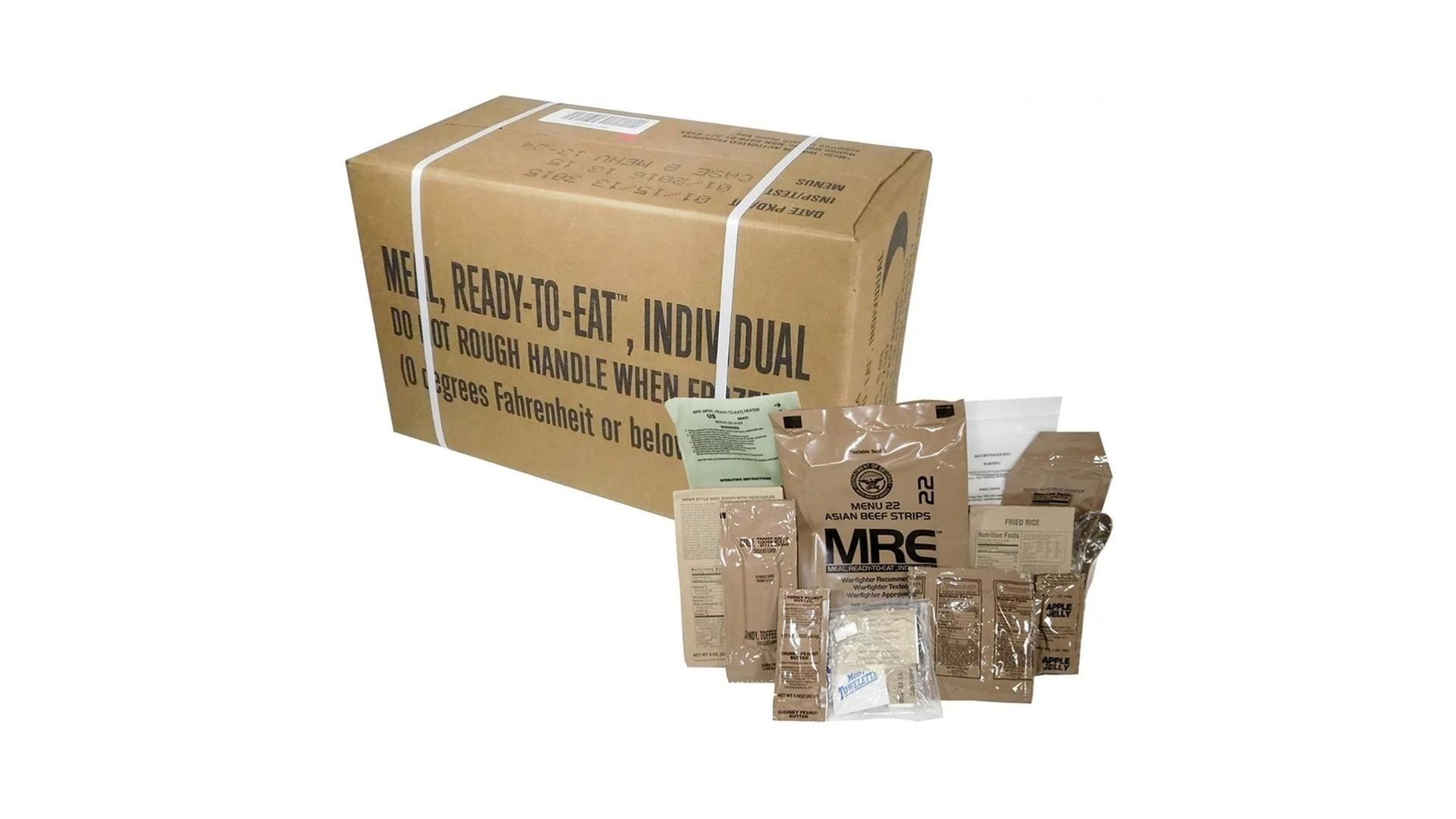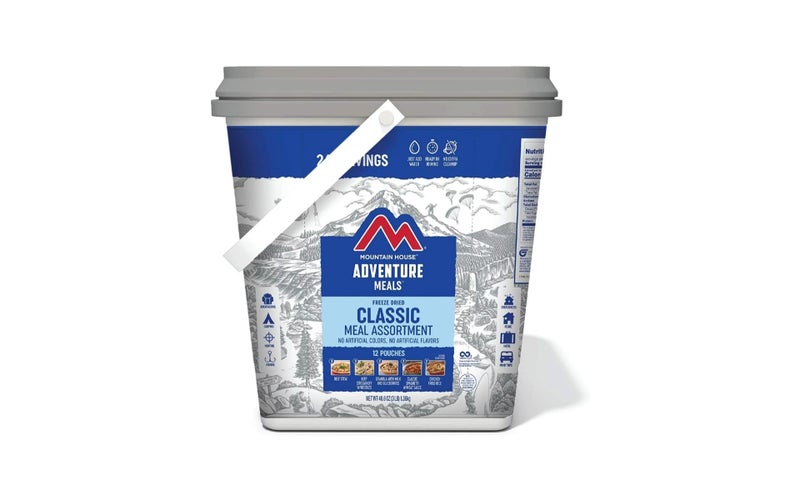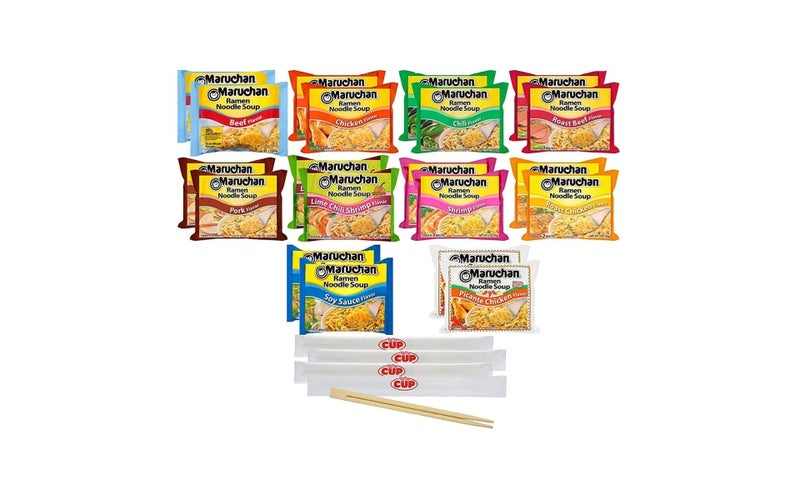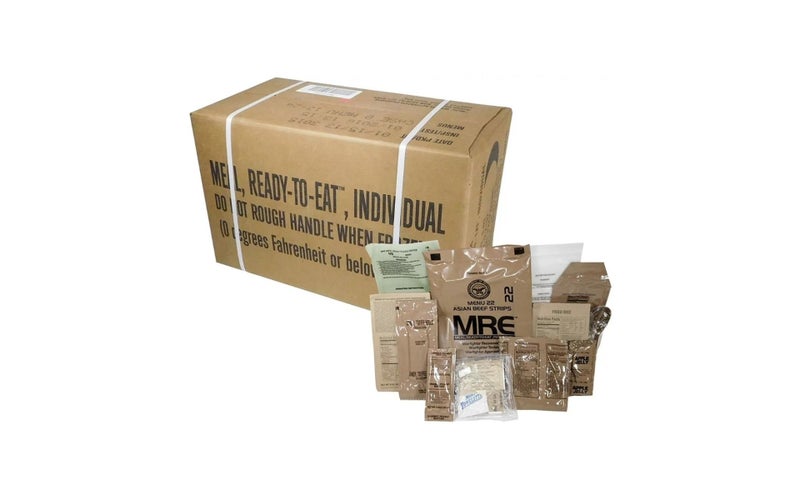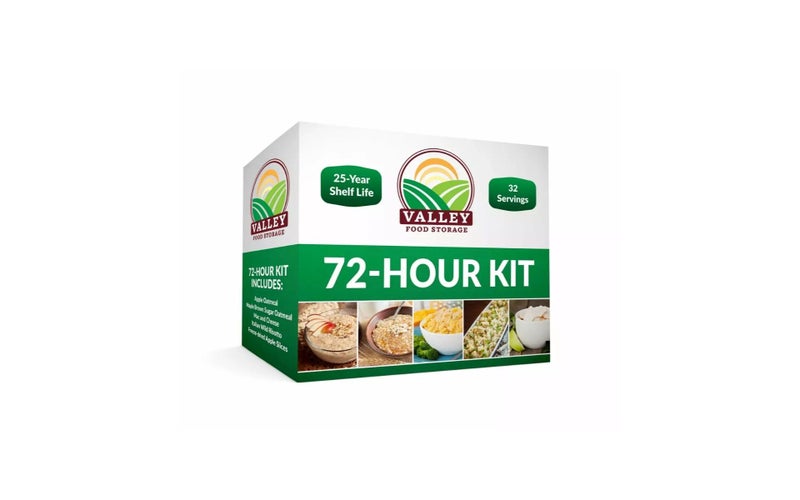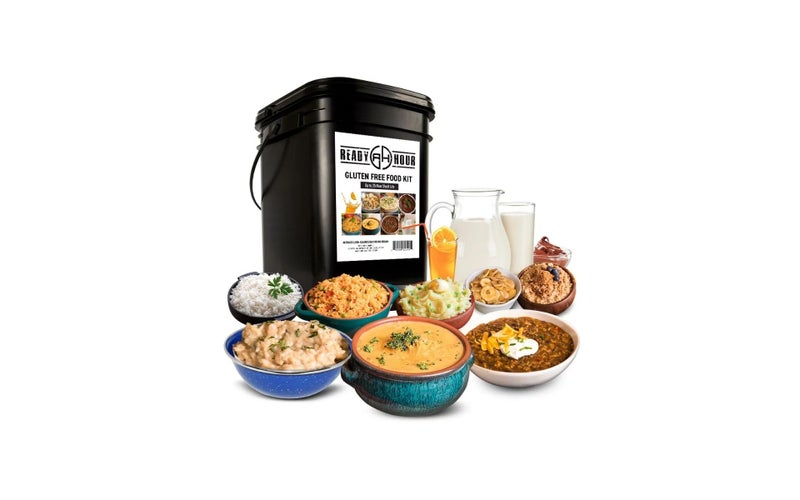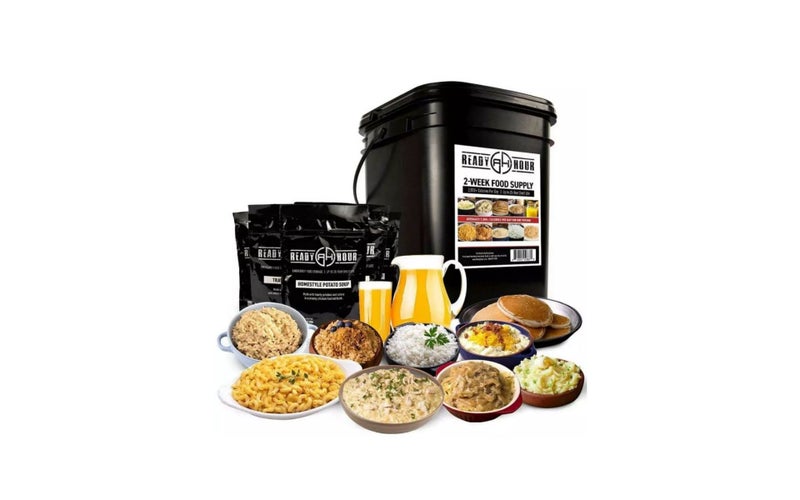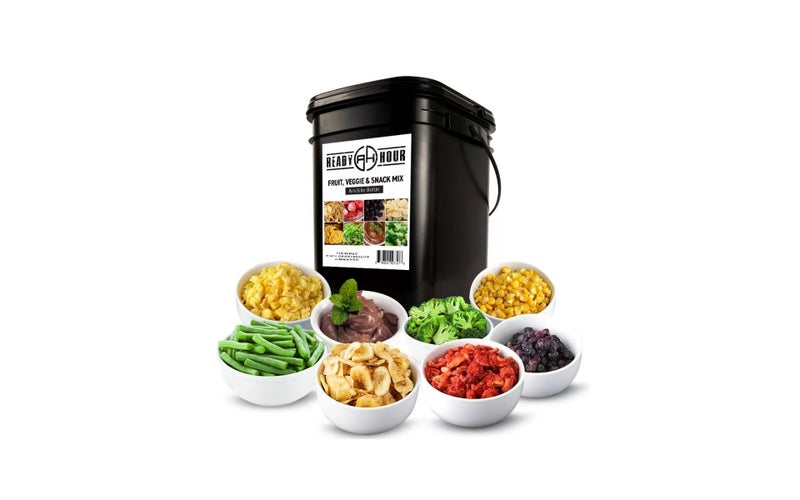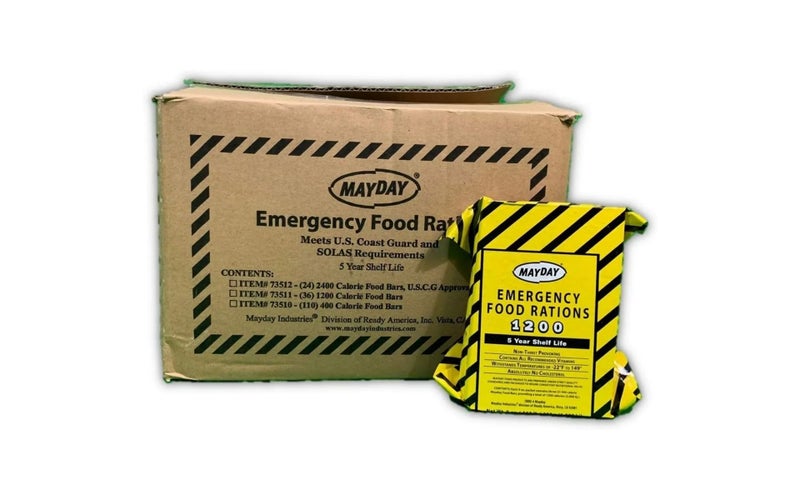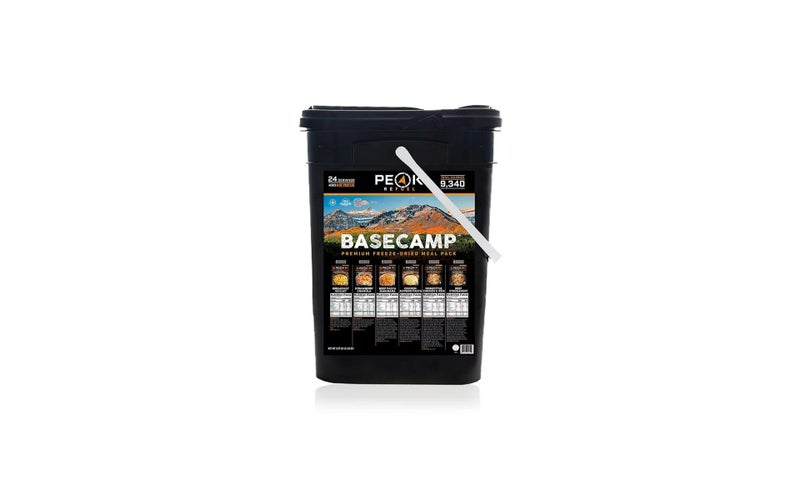We may earn revenue from the products available on this page and participate in affiliate programs.
Survival food kits are essential to ward off the munchies so you can press onward in your adventures. Whether you’re a doomsday prepper waiting to live out your Fallout: New Vegas fantasies or are just looking to keep your home prepared for those occasional emergencies, it never hurts to stockpile such kits. But there’s a lot to sift through, and it can be hard to determine which food kits are right for you. Craving a box of MREs for excursions into the wild or assortments of homestyle dishes for the whole family? Allow us to help.
Enter our guide for the best survival food kits on the market today with options for every palate. We’ve worked to combine strenuous research and real-life experiences to provide this collection of nearly every food kit for just about every need. Scroll on through and happy shopping.
Methodology
Whereas all these items can be purchased online either through retail giants or company websites, a few of them were available in-person for me to sample. As a current U.S. service members, I’m no stranger to MREs, and I’m sure everyone here is no stranger to instant good old reliable noodles either. However, brands like Peak Refuel and Mountain House were available for purchase in-store at my local REI. I bought four individual pouches featured in their bulk kits, one entree and one breakfast from each brand, to sample each one’s taste, texture, and ease of preparation. Items I couldn’t source in a timely manner or haven’t personally tried at all were reviewed through our usual research-based methods of digging through expert data and real-life consumer feedback.
It’s in our best interests as journalists and fellow adventurers to provide the most informative yet honest reviews we can on every buyer’s guide. Who knows if it could be close friends or even the writers themselves who will have to consult these some day? While it’s not always feasible to sample every item in every survival food kit imaginable, that doesn’t stop us from delivering the concise takes you need. We combine our real-world experiences with lengthy, tedious research, diving deep into expert and colleague opinions and, arguably the most important bit, consumer feedback. The best food kits will be the most readily available — meaning not currently sold out — easy to prepare, and best-tasting batches around with the trust of real consumers to boot.
While commonly citing a single, central source like an encyclopedia, the vast scope of products in this specific niche, calls for a broad range of input from retailers such as Amazon, Valley Food Storage, and My Patriot Supply. I myself have even purchased a handful of individual food packets available in stores like REI and included in survival food kits to better understand subtle differences between brands. I’ll make note of which ones I’ve personally tried in the product blurbs. For more information on how T&P curates its buyer’s guides and more, check out the link here.
A solid value and great quality, the Mountain House Classic Assortment Bucket is a stellar choice for outdoor adventurers and doomsday preppers alike. All-natural ingredients go into every pouch of freeze-dried dishes which include an appreciable level of variety from granola with berries to beef stroganoff. I’ve managed to try those exact flavors myself using individually-sold packets, and I’m happy to report they’re genuinely tasty with quick prep and the proper texture you would want. Just 10 minutes in boiling water is all the entrees ask for while the breakfast granola just needs a quick stir. It’s also important to point out that this item has the longest shelf life on this list, spanning 30 years.
With entrees topping out at roughly 600 calories per pouch, however, these aren’t the most energy-filled foods if you’re looking to pack on calories for a hardcore ruck. Maybe set aside an energy drink or an extra snack. I could’ve used one, unless that’s just me. Additionally, this specific package isn’t quite for the long-term preppers with only 12 pouches totaling 24 servings. For those in it for the long haul, Mountain House offers larger supplies on its website.
- Servings per container: 24 servings (12 pouches)
- Calories per serving: 200 to 300 calories
- Shelf life: 30 years
Individual items are easily found in outdoor adventure stores
No artificial wizardry
Broad variety of food including breakfast
Shelf life spans half a generation
Not for long-term preppers
Not for those wanting to pack on calories
If you want value, there’s no greater value to be had than the College Kid Special: a bulk pack of Maruchan Ramen Noodle Soup. Emergency food kit? Ladies, gents, and everyone in between, this has been the emergency food of an entire generation. It’s brainless to prepare, and it’s easy to modify for cheapskates with more discerning palettes. I personally like to add garlic, a fried egg, and a wallop of black pepper to mine. This specific kit comes in 10 flavors — I didn’t even know there were 10 flavors — plus chopsticks. All you have to do is source some hot water and a bowl.
Just know what you’re getting into. Being the most affordable supply on this list doesn’t mean you’re skimping out on any of the unhealthy bits. The lengthy-ish shelf life and distinct flavor can be attributed to the high sodium content — as high as 70 percent per pouch — which doesn’t bode well for heart health in the long run. There’s not much in the way of other nutrients, it’s low in calories, and let’s be real: Even with 10 flavors, this will probably get old in no time. I should know, as my family used to stock these.
- Servings per container: 48 servings (24 pouches)
- Calories per serving: 350 to 390 calories
- Shelf life: 14 to 18 months
10 flavors
Dirt cheap
Every human on Earth knows how to prepare it
Easy to alter when cooking
Not quite nutritious
Relatively poor shelf life versus dedicated food supplies
Can get old and boring really quick
Military MREs, as polarizing as they are, stand as rock-solid, calorie-dense choices for preppers and adventurers alike for offering a rainbow of complete meals with varying drinks and snacks. Other bagged supplies may include similar foods, but this is perhaps the only choice you can readily purchase that’s a complete meal. It can be consumed hot with the water-activated heater bag, or cold if you have zero standards for battlefield cuisine. Utensils are thrown in with every bag along with an assortment of extras which may include gum, Tabasco sauce, wet wipes, and matches.
I’ll insert the disclaimer right now that many flavors may not be for everyone. I zealously place their pasta dishes such as chili mac on a gold pedestal; it’s Chef Boyardee in a bag. Most of their beef entrees, on the other hand, are more akin to dog food, but taste is highly subjective and I have a few friends that actually enjoy them — weirdos. Also, note that shelf life is highly sensitive to temperature, so maximize your bag-o-stuff with cool temps preferably below 80 degrees Fahrenheit.
- Servings per container: 12 servings
- Calories per serving: About 1,250 calories
- Shelf life: About 5 years
Dense in calories
Meals come with snacks and drink mix
Heater element included
Can be consumed hot or cold
Mystery bag of unknown snacks/drinks
Heater element doesn’t always heat food evenly
A few entrees may be a bit unappetizing
If freeze-dried goods are the foods of the future, then Valley Food Storage’s 72-Hour Emergency Food Kit doesn’t sound like a bad start. Marketed as an option to provide the basic-length food supply during a crisis, this box of wonders rewards preppers with quality, non-GMO homestyle dishes. Consumers who have tried theirs have reported surprisingly pleasant taste and texture that’s more akin to premium instant foods. Naysayers can request sample packs to quell their skepticism. This food supply also entices with a rich variety including two different breakfast oatmeals and freeze-dried apples for snacking. The small packaging and simplicity also mean this is a stellar choice to throw in the back of your camper and take on weekend treks into the wild.
Let’s just hope you’re not a big eater in the first place. While the package includes a generous 32 servings for three days, calories are light with entrees topping out at 270 calories per serving. You can see how that can be a problem. In the hands of myself and some friends, that three-day supply sounds more like one or two.
- Servings per container: 32 servings
- Calories per serving: 140 to 270 calories
- Shelf life: 25 years
Company offers $10 sample packs
Superb variety including two breakfast items
Shelf life longer than I’ve been alive
Portable for all your adventures
Servings are low in calories
A comprehensive and premium choice for those steering clear of those funky proteins, the My Patriot Supply Gluten-Free Food Kit is impressively rich in foods. Try creamy chicken rice, mashed potatoes, and whey protein milk. There’s quite a variety in this bucket, or at least as much variety you can have without gluten. There’s a fair deal of items here that could even feed vegetarian family members or roommates for days. Consumer feedback on taste and quality is universally positive with praise for preserving homestyle cooking vibes 25 years into the end of the world.
It is just a tad pricey ringing in at tens of dollars more than a comparable Mountain House bucket, but the value given its contents and generous servings is undeniable. I only hope you like lots of rice as that’s the bulk of the entrees included in this food supply. In fact, the only meat item I could find was the creamy chicken rice, so celiac meat lovers may be left a little bummed out. Only a little.
- Servings per container: 120 servings
- Calories per serving: 90 to 490 calories
- Shelf life: 25 years
Comprehensive variety
Generous supply of food
Shelf life for time capsules
Premium homestyle cooking
Leans toward the pricier end
Hardly any meat dishes
The My Patriot Supply 2-Week Emergency Food Supply is a long-lasting feast for entire families. This writer is quite impressed with its scope of dishes from stroganoff to mac and cheese, and even pancakes. Seriously, pancakes! Because no apocalypse should keep the kiddos from enjoying some homemade flapjacks. While the whey milk drink from their gluten-free package is absent, their orange drink mix is still included. Taste and quality are reportedly top-notch, and many of the items can blend together to create genuinely hearty meals for most people.
Being a two-week supply of premium freeze-dried foods, this is one of the pricier options on this list. But hey, it’s still cheaper than the MREs. The size and caloric intake of your family will also affect how long these meals can actually stretch, so if you need more or less, the same foods can be found in months-long and week-long supplies on the company’s site. A quick glance at the nutrition labels also reveal that a few dishes are a bit fatty at up to 60 percent of one’s daily recommended intake of saturated fat per serving
.
- Servings per container: 118 servings
- Calories per serving: 150 to 490 calories
- Shelf life: 25 years
Feasting for weeks
Pancakes for breakfast!
Perhaps the best variety on this list
Shelf life for waiting on that perfect day
That’s one expensive bucket
Some especially fatty menu items
In need of a vitamin boost? My Patriot Supply’s Fruit, Veggie, & Snack Mix is a viable option for both vegetarian and vegan survivalists. As the name suggests, it is a mixed bag of variety ranging from freeze-dried blueberries and banana chips to broccoli and chocolate pudding. The shelf life matches the company’s other offerings at two and a half decades, and the amount of servings per container is plentiful.
There is plenty to enjoy here if you’re a fan of fruits and veggies, but there isn’t much else besides that. Could you make this stand on its own? Probably. But it’s strongly recommended as an add-on to bolster more comprehensive food supplies. One can pair it with the rice dishes in other My Patriot Supply kits and have a better-rounded vegetarian diet which is what most customers have done anyway.
- Servings per container: 114 servings
- Calories per serving: 15 to 220 calories
- Shelf life: 25 years
Dessert included
Fruits can be snacked on as-is
Store and forget until the kids go to college
Hardly anything else
Strongly preferred as an add-on
The most calorie-dense food here is also the easiest to eat and most portable to carry. MayDay 1,200 Calorie Food Bars are marketed as an emergency food supply for both camping and crisis. It’s formulated to provide ample vitamins and sustenance — 400 calories per serving, three servings per bar — for energy and to prevent weight loss in the absence of proper foods. Being a simple bar not unlike a Clif or Nature Valley bar, the only prep needed before consumption is taking the wrapper off. A neat highlight is this product’s ability to tolerate storage in extreme conditions from 22 degrees below zero to 149 degrees Fahrenheit.
Effective and straightforward? Absolutely. But I would keep these around as an emergency food supply for when the rest of your emergency food runs out. The texture is reportedly strange and tough, being described as “a lump of brown sugar.” Other consumers recommend that the elderly without dentures or those with toothaches avoid chomping down on these. Also, I hope you like a mild hint of apple cinnamon, because that’s the only flavor available. One consumer suggests adding peanut butter to help, so we hope you also enjoy peanut butter.
- Servings per container: 108 servings (36 bars)
- Calories per serving: 400 calories (1,200 per bar)
- Shelf life: 5 years
The most compact, portable food item here
The most calories per single food item
Higher-calorie bars available
Tolerance to extreme storage conditions
Hard and tough
Faint flavor
Now this is a rockstar lineup of foods that I genuinely enjoyed trying. Peak Refuel’s Basecamp Bucket is a calorie- and protein-rich assortment of premium freeze-dried foods that set themselves apart with a bit more flavor and nutritional value. Like other bucket-sized supplies of freeze-dried goods, this container is good for 12 pouches totaling 24 servings. Most entrees deliver between 40 to 50 grams of protein per pouch. With an incredibly rich flavor in both the chicken alfredo and granola dishes, its taste and texture are a smidge above other options such as Mountain House. Another neat highlight of Peak Refuel is their ability to be prepared with 30 to 60 percent less water depending on the dish.
The big caveat to the Basecamp Bucket is its insistence as camping and hiking food and not necessarily an emergency food kit. Shelf life is not directly listed on their site or on Amazon, but consumer feedback reports that they’re allegedly good for two years. A decent amount, but 25 to 30 years is certainly more appealing. This is definitely something to keep stashed in a cabin or camper for long trips, but not too long.
- Servings per container: 24 servings (12 pouches)
- Calories per serving: 260 to 520 calories
- Shelf life: About 2 years
Breakfast included that’s not just granola
Highest protein content per pouch
Less water required per serving
Not for long-term preppers
Relatively minuscule shelf life
Our verdict on survival food kits
Mountain House’s Classic Assortment Bucket takes the cake for Best Overall for its stellar value and quality paired with the longest shelf life. Maruchan’s Ramen Noodle Soup Variety Pack wins at being our Best Value for reasons any bargain hunter can see right off the bat. And good old military MREs make the cut for offering complete, hearty prepper food. But what do you think? What are your choices for the best survival food kits money can buy? We’d love to hear back and further grow our knowledge with you.
What to consider when buying a survival food kit
Many survival food kits and emergency supplies will be done in a very similar manner, but there are some outliers with their own nuances that are available for sale and worth mentioning. Are they your typical freeze-dried food or is it a ready–to-eat bag of goodies? How are these specific foods prepared? How long are these foods intended to last? These are some important tid bits to know, so here are a few ways survival food kits can differentiate themselves.
Types of survival food kits
MRE
A personal favorite, military-style MREs are the quick, grab-and-go-type foods you can tear into with little to no prep at all. Emphasis on every single word in the abbreviation: Meal Ready-to-Eat. These are complete, multi-course meals bundled up in an air-tight bag. Drink mixes, a side or two, and some sort of dessert is the usual arrangement, and entrees are almost never freeze-dried. Being intended for servicemembers to use on battlefields and long journeys, the foods can be eaten cold or hot using a water-activated heater bag.
These aren’t as common as the simpler kinds of survival food kits, and their pricing reflects that as a dozen surplus MREs can cost nearly $200 to order. On top of that, their methods of preservation mean that they’re far more sensitive to conditions than some bag of freeze-dried goods. Keep them somewhere dry and cool, preferably below 75 to 80 degrees Fahrenheit to maximize their relatively short shelf life.
Freeze-dried
This is the method by which most — but not all — survival food kits are made, and for good reason. It’s simply the easiest, most reliable way to store a bounty of foods while keeping it easy to prepare and without sapping all the flavor and nutrients out of it. The process dehydrates the food to keep moisture and the microorganisms it attracts from spoiling it.
Some foods like fruits can be eaten as-is, and just about all freeze-dried foods can be rehydrated with some time in water. Hot foods only need to be soaked in boiling water for about nine to 10 minutes before being ready for consumption, and the texture of meats and noodles afterwards is comparable to home-cooked versions of the same dishes.
Long-term emergency supply
These will be your supplies specifically sized to feed a household for months and even years. Shipped in large buckets, multiple buckets, or even entire boxes, these emergency food supplies won’t quite be the choice for buyers looking for camp grub or the “I’m too lazy to cook tonight” solution. These are for genuine preppers and are strongly preferred to be kept in storage for the next food shortage or world crisis. Containers may hold thousands of servings and tens of thousands of calories depending on the time it’s intended to last.
As expected, these will often be the most expensive and cumbersome to store. Expect kits for months to ring in at a few hundred dollars, where supplies for years can stretch into the thousands. Have a good place for all this grub set aside, preferably somewhere cool and dry to prolong the shelf life.
Key features of survival food kits
Calorie count
Survival foods come in a wide range of calories to suit different purposes and lifestyles. Many freeze-dried foods intended for casual camping and hiking trips may offer less than 600 calories per pouch, or roughly 300 calories per serving — enough to get you through the afternoon of leisurely walking or sitting around the house, but not so much if there’s work to be done.
Military MREs and some premium survival foods are intended for more active consumers in need of a serious energy boost, so it makes sense that they would be more calorie-dense at over a thousand calories. Most MREs sit between 1,200 and 1,300 calories, and some specialized energy bars can far exceed that. What’s best for you depends on your lifestyle and nutritional goals with such foods. For anything you intend to bring on serious adventures, we recommend leaning on the heavier side.
Preservation method
Think about how this food is preserved and made to last. Is it simply dehydrated? Or does it go through the more complex and quality-preserving method of freeze-drying? Maybe the food is simply soaking in some high-sodium sauce and locked up in a vacuum-sealed bag. Nearly all these methods will prolong food for some time, but some methods do it better than others.
Freeze-drying brings food to a low temperature before extracting the ice from it. This removes moisture without damaging the food and makes it easier to rehydrate versus dehydrating which uses heat to evaporate the moisture. Cheap foods like instant ramen will rely on sodium and artificial preservatives, which may lead to cardiovascular issues when consumed in excess. MREs, while moist in most cases, are stored in air-tight, vacuum-sealed bags, but their shelf life still pales in comparison to freeze-drying and requires optimal conditions to stave off spoilage.
Preparation method
How is this food prepared for consumption? In the case of nearly everything on this list, plus their related products, the most they ask for is to rehydrate in boiling water for roughly 10 minutes. Some breakfast items like granola just need a splash of cold water to mix with the powdered milk before being ready to rock. Fruits can be eaten as-is or rehydrated in water if so desired.
Due to their requirement to be a versatile, any-time meal, MREs can be eaten hot or cold. Heater bags can be used to warm entrees and some sides and only require a few minutes to reach scalding temperatures. The common theme here is that nearly everything is quick and easy. All you need to do is find some water.
Survival food kits pricing
Most survival food kits and emergency supplies will hover between $100 and $150 for a Home Depot bucket-sized container of a dozen pouches of freeze-dried goods. Mountain House undercuts many other high-quality options at around $117 on their website. MREs, being rarer and more complex, will ring in at over $180 for the same amount of pouches, but you’re still getting more calories and variety. Our Best Value Maruchan pack rings in at a penny-pinching $26. If your needs are more or less, weekend-long or week-long supplies will hover between $60 to $80 while months-long and years-long kits can easily exceed thousands.
Tips and tricks
As with something you do for decades upon decades, you pick up a few tips and tricks along the way in terms of selecting the right product, and/or using it. That’s the case with us and survival and emergency food kits. To help you bridge the information gap, here’s a selection of what we’ve learned along the way.
- Feeling lazy or on a time crunch? Military MREs can be eaten both hot and cold. No need for the heater if you don’t want to use it. They just taste a little better warm.
- The individual food packets of these kits can be stored in more places than just some basement, especially the freeze-dried and MRE-style grab-and-go types. Pack some in your car or in a camper.
- You’re rarely limited to the specific items on this list if you need more or less food. Companies may offer the same food but in a variety of sizes from two-day supplies to years-long.
FAQs about survival food kits
You’ve got questions, Task & Purpose has answers.
Q: What food should I stockpile for survival?
A: It’s safest to always brace for the worst and stock everything you need to meet your nutritional requirements. Focus on essentials to provide carbs, vitamins, and proteins, and look at high-variety packs which include rice, meats, vegetables, and fruits. They’ll likely be freeze-dried for a long shelf life.
Q: How do you store survival food?
A: Some companies advertise that their freeze-dried foods can be taken anywhere including in cars, offices, and campers for whenever you might need them. A good rule of thumb to follow for any type is to simply keep them somewhere dry and cool — at or below 75 degrees Fahrenheit.
Q: What foods have the longest shelf life?
A: Anything freeze-dried will greatly exceed other methods of preservation by leaps and bounds. Most survival food kits sold in bulk will be freeze-dried and capable of lasting for as long as three decades. Compare that to MREs with shelf lives of approximately several years depending on conditions.
Q: Are survival food kits worth it?
A: About $100 to over $200 dollars buys you food for a variety of occasions from emergency prep to outdoor adventures that tastes just as fresh in a few years as it did when new. So, yes. I’d say food supplies are money well-spent. You’ll never know when you might need them.
